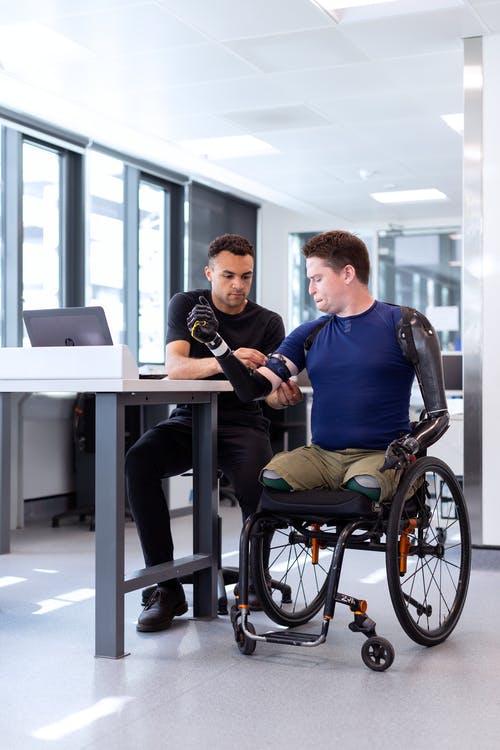Here are some tips to help you take care of disabled people. These include making sure that your home is safe for the disabled person and reminding him/her of his/her limits. Take regular breaks and encourage the disabled person to do their own tasks. These tips will make life easier for your loved one who is disabled.
Exercise
Many adults with disabilities are unable or unwilling to exercise regularly. It is vital to make physical exercise a priority, especially for those with disabilities. It is possible to exercise by walking, jogging and using ellipticals. People with disabilities can make the most of their exercise program by using an elliptical or swimming pool.
Regardless of the specific physical limitations, exercise can improve mental health, reduce stress, and boost self-esteem. Some people with disabilities may find it difficult to participate in activities because they fear falling, lack energy, or have physical limitations. When creating an exercise program for disabled people, it is crucial that health professionals take into account their ability. A patient with severe disabilities may be more inclined to exercise if their doctor recommends it. A health professional should be able refer patients to resources and programs that can help them reach their fitness goals.
Communication
When communicating with someone who has a disability, be sure to keep your tone of voice gentle and easy to understand. Use simple sentences and visual aids to communicate with people with disabilities. Avoid medical or abstract terms. If the person is unable to understand, be prepared to repeat your instructions multiple times. They might have difficulty understanding words and sentences, or may not be able to understand what you are trying to say. To avoid confusion, keep your sentences brief and be open to asking for clarifications if needed.

Communicating with someone with disabilities may require more skill and knowledge than you might imagine. A person with a disability may struggle to describe his or her symptoms or express what he or she feels. A caregiver should have a good relationship with the individual and should be able to communicate effectively with them. Sometimes, sensory overload can make communication difficult. Caregivers need to be able to understand the disability and learn the language used.
Physical therapy
The benefits of physical therapy for disabled people are numerous. Regular exercise can improve muscle strength, mobility, prevent loss in function, and stop chronic conditions from getting worse. Physical therapists are movement specialists who provide hands-on treatment, education, and prescribed movement in order to improve quality of your life. They are a valuable resource to those who might otherwise be limited in mobility. It is important to remember that not everyone can benefit from physical therapy.
Patients can benefit from specialized rehabilitation designed to treat specific conditions. Physical therapy for disabled persons can help people with chronic pain to manage their symptoms and improve their daily living. PT may include cupping, home exercise, and mobility-homecare. Some therapies may involve the use PT tape also known as kinesiotape. No matter what the cause of pain is, physical therapy can help improve an individual’s quality of life.
Plans for Special Needs
The Federal government has made it possible to obtain coverage through Dual Special Needs Plans (DSNPs). The DSNP model calls for a single plan to coordinate Medicaid services and Medicare services. A DSNP also must provide coordinated LTSS. disability support services DSNP may ask CMS to designate it as a FIDE Plan for Special NDIS Chirnside Park. It may receive additional Medicare payments if it receives this designation. But how can states and MA organizations benefit from this innovative approach?
The DSNP model does have its problems. States and federal agencies are not aligned in terms of how they deliver care. For example, DSNPs have limited administrative flexibility. They have had to overcome many challenges that have hindered their integration. DSNPs might still be the most flexible, scalable, and adaptable integration platform.
Disability insurance
A disability insurance policy covers medical expenses incurred by a disabled person during their time of disability. This type is often supplemented to an individual disability insurance policy. Individual disability insurance is governed by state law, which regulates bad faith and contract law and protects the insured against unfair practices. Individual policies usually include optional benefits known as riders. Riders can be purchased for an additional fee and can enhance or reduce the benefits of a policy.
The policy provides a schedule that outlines how disability benefits will be paid. Benefits are often paid for a specific number of months. Some policies allow people to return to work part time or with lighter duties. A partial disability benefit is available if an individual’s income falls below 20%. The policy determines how long disability benefits last. It is important to know that some policies only cover medical expenses if the individual is permanently disabled.

